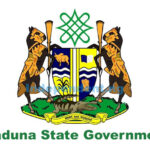Doctor Temitope Kolade is the Senior Programme Manager and Chief of Party of the Accelerating Nutrition Results in Nigeria (ANRiN) project of the Institute of Human Virology, Nigeria (IHVN). In this interview, she speaks on how balanced diets can be achieved with local foods, ways women of child-bearing age and children under five years can stay nutritionally healthy, as well as how ANRiN is helping to address nutritional challenges.
How important is breastfeeding?
It is extremely important in the development of any child, because breast milk contains every single thing that the child needs to develop in terms of nutrition and antibodies.
Autistic patients at higher risk of specific dental problems – Experts
Perils of violation of Abuja Master Plan
Also, when a child is exclusively breastfed, you are giving it full complement of everything that is required. We have colostrum, which is the first breast milk that comes out; it is extremely rich in the nutrients that are required.
Unfortunately, a lot of people in our environment erroneously think that there is no way just breast milk will satisfy a child.
However, the way God has designed it, everything a child needs is in breast milk. For the first six months of life, the child does not need any other thing, even water, apart from breast milk.
Women breastfeeding must alternate the breast so that the child is not just feeding on just one breast all the time. Proper positioning is included in our Maternal Infant Young Child Nutritional Counselling (MIYCNC).
We teach the mother how to position the child and how to latch the child. The challenge that mothers have is that when they don’t latch the child well, they’ll probably have sore nipples. When the nipple is sore, the mother will be in pain and she will not be pre-disposed to actually breastfeed the child, but with adequate nutritional counselling, the mother will find it very easy.
Another important thing about breastfeeding is that the child is not exposed to micro-organisms that can come in the course of feeding. When feeding with other diets, you have to look at the personal hygiene of the person breastfeeding the child, the hygiene of the person preparing the meal and the utensils that are used.
Those are the avenues through which a child can get gastro-intestinal infection. For children who are less than six months and whose immunity is not so strong, we want to minimise the amount of exposure to organisms that can cause infection in them.
So, exclusively breastfeeding a child has a lot of benefits on different dimensions, and also for the mother. There is the mother-child bond that is also achieved when a mother is breastfeeding.
What is your advice to women and children about nutrition?
Having a balanced diet does not have to be expensive, a lot of people spend so much money on buying imported meals for children whereas we have rich diets within our environment which we can leverage on such as meat, maize products and rice.
Even for imported meals, if you look at some of the ingredients, you will find out that they are things readily available around us. Why spend so much money on things that have been processed to a large extent when you can actually use the meals in their natural state? It is just the way that we prepare it for children that may be a little different.
What is the relationship between nutrition and vaccination for babies?
A balanced diet does not take away the need to actually build a child’s immunity. It is like a multi-dimensional approach; we are building and ensuring the child gets a balanced diet optimised, as well as getting their immune system strengthened.
There is also the need for them to get immunised. This project is also in support of ensuring that the child gets all the required immunisation as and when due
What is the nutrition programme being implemented by ANRiN?
ANRIN is a World Bank-funded project. In 2017, the National Health Survey showed that nutrition indices were very poor across a number of states in Nigeria.
There was a high rate of stunting among children with poor neurological development.
For every individual, their development starts from when they were in their mother’s womb. That is why it is very important that we have to ensure that the mother’s nutritional status is also optimised even before she gets pregnant and while she’s carrying the baby.
Basically, the ANRIN project came in to address these challenges of poor nutritional indices. 13 states were selected to implement the first phase of the grant. The project started last year, 2021, and it’s going to be implemented for three years in the first phase. Currently, IHVN is implementing the project in Kano.
So, the 13 states that are implementing this project have what we call the State Project Implementation Units, and they are the ones who are directly responsible for ensuring that the project is implemented according to the project charter of the World Bank.
For Kano, we have three non-state actors, because Kano is quite a big state. We have grouped the local government areas to provide what we call the basic package of nutrition services. In this instance, it is actually at no cost to the beneficiaries. So the targets are women of child-bearing age and children under the age of five.
We have seven service delivery areas; what we call interventions. Some targets are to address the mother’s needs, while some address the child’s needs.
The project is more of a prevention intervention. There are two arms: the community-based one, where we have Non-Governmental Organisations (NGOs), including IHVN, engaged, and there is also a facility-based arm that is being run by the National Primary Health Care Development Agency (NPHCDA).
So, we have selected Primary Healthcare Centres (PHCs) within the state that have been prepared to provide nutrition intervention. For those of us working in the community, it’s more of prevention giving than nutritional support/ supplement to ensure that they don’t get to that state of malnutrition.
However, in the process of providing these services, if we come across children who are already showing signs of malnutrition, what we do is refer them to the PHCs where they can be managed.
What has been the impact on the communities?
The Maternal Infant Young Child Nutritional Counselling (MIYCNC) intervention targets pregnant women, lactating women, as well as children under the age of two.
When we are able to identify and get across to a woman who is pregnant or lactating, we educate her on the nutrition needs in pregnancy and how she can ensure her nutritional status is optimised using local meals available within her locality.
When she has a child and the child is between the ages of zero to six months, we lay more emphasis on exclusive breastfeeding for the child, as well as nutritional counselling for the mother that helps her optimise breast milk production.
For children between six and 24 months of age, we also provide counseling on how to ensure that at every point in time the child is getting a balanced meal so that their development is optimised, and that is the first intervention.
The second is what we call Intermittent Prophylaxis Treatment for Pregnant Women. Basically, we are giving them anti-malaria prophylaxis.
The third intervention that also targets women is iron and folic acid supplementation. So, for every pregnant woman that we come across in the community, we give them iron and folic acid tablets which will cover the duration of their pregnancy.
Now, for children, we have what we call micro-nutrient powder for nutrition. Micro-nutrient powder is a small sachet that contains nutrients that are readily found within our environment in sufficient quantities.
The women are counselled on how to use the micro-nutrient powder; how to mix it in the child’s food and how to give it to the child. This is given to children between the ages of six and 24 months.
The next one is deworming; we give them Albendazole tablets twice every year. Then we have Vitamin A supplements which are also giving twice a year.
The last one I believe is Zinc ORS for the management of diarrhoea.
We also found out that the common killer diseases of children under the age of five are diarrhoea illnesses.
We distribute Zinc-fortified ORS sachets and educate the women on how to use it.
The target of the three-year project is to provide these services to 357,230 mothers and 740,184 children.
Currently, we are in the second year of the implementation, and so far we have been able to provide services to 204,421 women and 426,000 children.

 Join Daily Trust WhatsApp Community For Quick Access To News and Happenings Around You.
Join Daily Trust WhatsApp Community For Quick Access To News and Happenings Around You.


